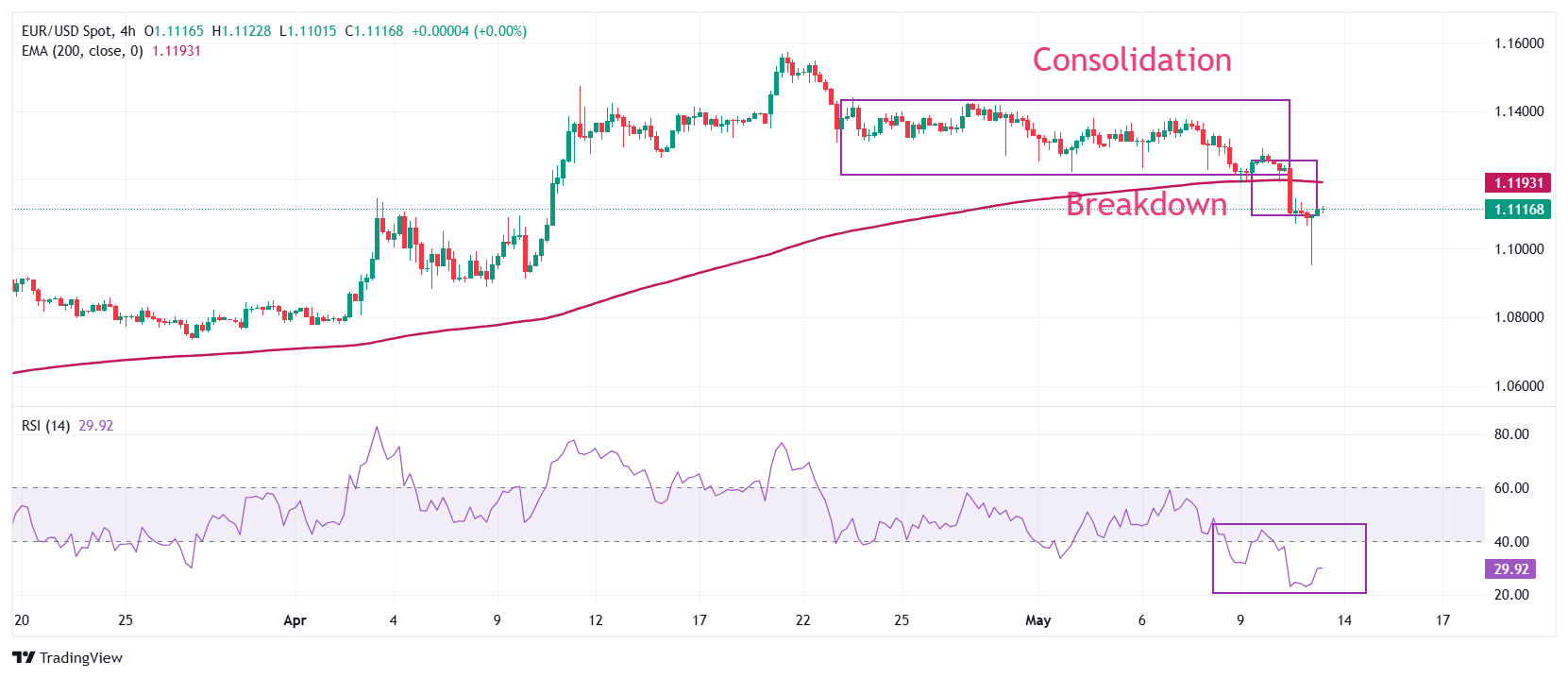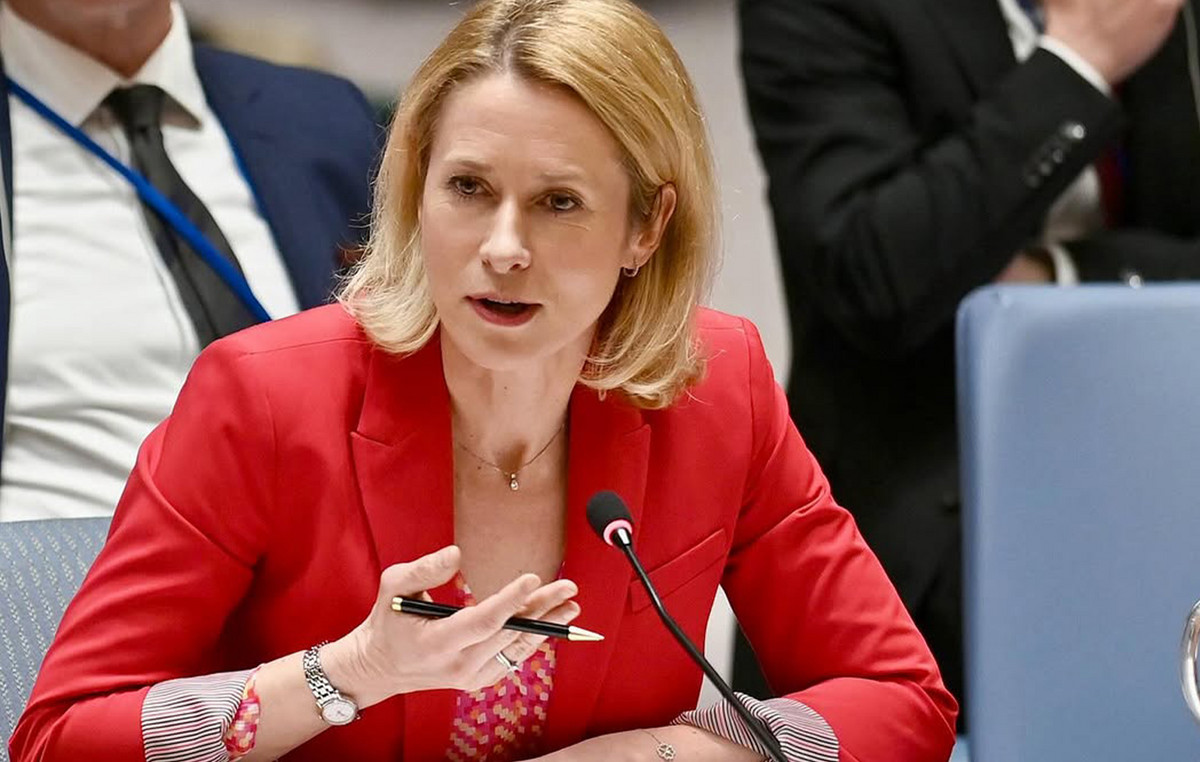- EUR/USD advances to 1,1100 while a temporary truce in the trade between the US and China and the absence of commercial conversations between the EU and the US keep the pair at a disadvantage.
- The president of the FED, Goolsbee, warns about an economic slowdown in the US and high inflation.
- The US CPI is expected to have grown constantly interannual.
EUR/USD precautionaryly quotes near a monthly minimum around 1,1100 during European negotiation hours on Tuesday. The main currency pair struggles to gain ground since the prospects of the US dollar (USD) have been strengthened after the United States (USA) and China agreed to avoid an escalation in the commercial war and substantially reduce tariffs on Monday.
At the time of writing, the American dollar index (DXY), which tracks the value of the dollar against six main currencies, clings to the profits of the previous day around 101.60.
On Monday, Washington and Beijing reduced tariffs by 115% for 90 days after a two -day meeting in Geneva over the weekend, which resulted in a decrease in additional 10% tax in the US and 30% in China. The 20% fentanyl tax burden in China remained intact, while Washington has assured that there have been “constructive discussions” to solve it.
The announcement of a temporary truce resulted in a strong increase in the US dollar and a rally in the US stock indexes, indicating that investors have regained confidence in the economic perspectives of the USA. American assets. Market experts and Federal Reserve officials (FED) painted a gloomy panorama for the US economy following the commercial war between the US and China.
After the temporary truce in the trade between the US and China, Fed officials have become less fearful about economic perspectives. On Monday, the president of the Fed of Chicago, Austan Goolsbee, declared that the impact of the tariff war between the US and China will be less than what they had previously anticipated. “It is definitely less shocking in terms of stagflation than the path they had,” Goolsbee said, according to Reuters. However, he warned that fears of high inflation and economic slowdown still persist. “The tariffs remain three to five times higher than they were before, so it will have a staging impulse in the economy. It will make the growth slower and that prices rise,” Goolsbee said.
What moves the market today: Eur/usd progress but the prospects are still bassist
- EUR/USD rises slightly above 1,1100 on Tuesday while the US dollar takes a break after a strong rally on Monday. However, the prospects of the torque are weakening since the European Union (EU) and Canada seem to be the only important economies that have not reported any significant progress in commercial discussions with the US from the announcement of reciprocal tariffs by President Donald Trump.
- In addition, the EU has prepared countermeasures if commercial conversations with the US do not conclude positively, a movement that could lead to commercial tensions. On Thursday, the European Commission launched a public consultation document contained with up to 95,000 million euros in US imports. If commercial conversations do not achieve a satisfactory result for the block.
- Another factor behind the gloomy perspectives of the torque are the solid dovish bets of the European Central Bank (ECB). The operators have become increasingly confident that the ECB will cut interest rates again at the June meeting, since officials have indicated that the disinflation trend remains intact and price pressures will return to the goal of 2% by the end of the year.
- In the economic field, the US Consumer Price Index (CPI) for April will influence the EUR/USD, which will be published at 12:30 GMT. The IPC report is expected to show that inflationary pressures are kept intelligible. It is estimated that the general CPI and the underlying CPI have grown at a constant rate of 2.4% and 2.8%, respectively.
Technical Analysis: EUR/USD Fight to gain land about 1,1100

EUR/USD gain grounds temporarily below 1,1100 on Tuesday after a strong mass sale the previous day. The pair collapsed on Monday after a break in the range of 1,1200-1.1440 formed in the previous 20 days of negotiation. The main currency pair extends its downward movement below the Exponential Mobile (EMA) average of 200 periods, which is around 1,1200, indicating a bearish trend.
The relative force index (RSI) of 14 periods falls below 40.00, suggesting that a new bearish impulse has been activated.
Looking up, the maximum of April 28, 1,1425 will be the main resistance for the pair. On the contrary, the minimum of March 27, 1,0733 will be a key support for the euros of the euro.
Source: Fx Street
I am Joshua Winder, a senior-level journalist and editor at World Stock Market. I specialize in covering news related to the stock market and economic trends. With more than 8 years of experience in this field, I have become an expert in financial reporting.







